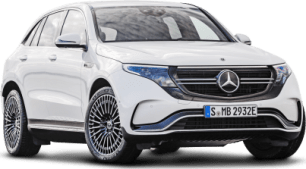The Tank 500 has a fancy-schmancy start-up screen replete with Tron-style graphics and an accompanying soundtrack that are rather impressive, if you’re into that sort of thing. But I’ll let you know a few paragraphs deeper into this yarn why I think GWM should do away with that whole sequence.
This wagon has a kerb weight of 2605kg and a turning circle of 11.2m, so it’s not insubstantial, but it rarely feels too clumsy or cumbersome to drive anywhere.
It’s reasonably nice on-road during general driving duties but there are a few things to watch out for.
Ride and handling is a bit firm and jittery on irregular surfaces such as rough country roads, but it's okay otherwise. It's reasonably quiet, somewhat refined and it's comfortable without being too plush.
The engine, electric motor and auto transmission generally work together pretty smoothly, but there were times on this test, mostly on road, where there was a jarring change when the electric motor switches to the petrol engine. Not atrocious, but certainly noticeable.
Acceleration is sometimes unpredictable with a sequence of events thus: I put my right foot down to get enough speed for a quick merge from standstill into oncoming traffic, no reaction from vehicle at all… then, with a flaring throttle, it will suddenly lurched into motion. Inconvenient at best, dangerous at worst.
The brakes are also very spongy and often slow to bite until really stomped.
The Tank 500’s driver-assist tech is too clunky and intrusive. I drive a lot of country roads and because those surfaces sometimes don’t have road markings at the side or a centreline, the Tank 500 was constantly sounding alerts or jerking the steering wheel to get me back into what it thought was the correct driving line on those country roads.
The adaptive cruise control is inconsistent. You’ll cruise along nicely until the system applies immediate heavy braking due to a speed sign that’s not applicable, or a car that’s not that close (to the side or in front).
Also, the driver monitor is annoying. It was forever telling me to have a break, or to keep my eyes on the road, or to focus on the road, or – and this is a direct quote from the system itself – “Beware of the road”.
I reckon GWM should ditch the Tank 500’s fancy start-up screen graphics and soundtrack and spend that money on sorting out the driver-assist tech so it operates more seamlessly and effectively.
However, the good news is the Tank 500 feels right at home when four-wheel driving.
On paper, it seems like it should be capable off-road. It has a Borg Warner dual-range transfer case, off-road driving modes and a rear lock.
It checks out in terms of off-road measurements with approach, departure and rampover angles of 30, 24 and 22.5 degrees, respectively, 224mm ground clearance and a wading depth of 800mm.
And it mostly is rather capable, but there are a few issues here and there.
The Tank 500 is built on a traditional platform, a body on ladder-frame chassis, and that's pretty much 4WD wagon personified right there.
It has all the mechanicals to go with that, as well as the added bonus of an electric motor which punches a bit more power and torque into this vehicle.
There is plenty of torque across a decent spread of revs and, when off-roading, that transition between the electric motor and the petrol engine is generally pretty smooth.
Driving modes and other off-road driver-assist tech on board the Tank 500 work pretty well, but the off-road traction control system could do with a bit of a recalibration as it’s not quite as precise as it is in some of the Tank 500’s natural rivals.
Low-range gearing is good, engine braking is solid and the drive modes – adjusting engine outputs, transmission settings and more – all seem to work seamlessly well.
There is plenty of other tech on-board, including a 360-degree camera, and an off-road set-up on the screen that shows you the vehicle’s pitch and roll, tyre pressures and other information.
In the past I have written off features such as the Tank 500’s transparent chassis function. I'd rather stick my head out the window and have a look, or stop the vehicle, get out and have a good look at the track ahead.
But the transparent chassis function is of some value, although you shouldn’t rely on it or any of the other tech. You still want to have a real-time, real-world view of the track heading to the sides. And the Tank 500 offers plenty of visibility.
There are a few other trade-offs in this 4WD’s make-up, though. The side steps look like they could easily be susceptible to damage while off-roading, although I managed to avoid grinding them on any rocks, and the standard tyres are on-road SUV tyres (made for reduced noise) and are less than satisfactory for 4WDing.
If you're planning to use the Tank 500 as your tow vehicle of choice, then it's handy to know that unbraked towing capacity is 750kg and braked towing capacity is 3000kg, which is under the 3500kg norm for this market segment.

